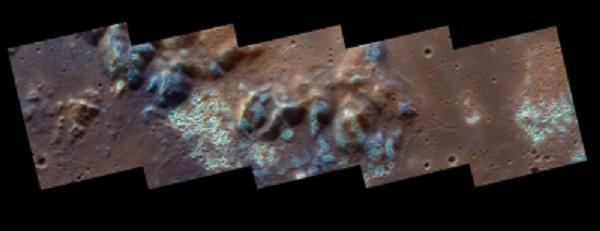[/caption]
How long has it been since you’ve taken a good look at Mercury? For the backyard astronomer, all we’ll ever see is the speedy little planet as a bright crescent a few times a year. But, for the MESSENGER spacecraft, Mercury isn’t quite as boring as you might think! Some strange new features have been spotted and a planetary geologist speculates they could be attributed to hydrogen venting from the planet’s interior.
While it’s only been a week since MESSENGER sent back some curious photos of Mercury’s surface, the revelation has created quite a stir in the planetary science community. These observations have included evidence of shallow depressions which have formed into non-uniform crater structures which appear to be recent. In addition, they have a high albedo – indicative of some sort of reflective material. But, what?
According to Marvin Herndon, an independent scientist based in San Diego, Mercury formed under great pressure and high temperature – enough to leave iron in a molten state. If so, it should be responsible for absorbing large amounts of hydrogen. As it cools and transforms to a solid state, the hydrogen is then released, forming a type of “geyser” on the planet’s surface.
“These hydrogen geysers could certainly have caused the rimless depressions that MESSENGER sees.” says Herndon, a self-proclaimed maverick in the world of planetary geology.
As the hydrogen is released from below the planet’s surface, it would also react with other elements it would encounter – possibly iron sulphide, commonly found on Mercury’s surface. This would cause a reduction to metallic iron. From there it would form a light “dust” which could account for the bright, new features seen by MESSENGER.
Original Story Source: MIT Technology Review News Release. For Further Reading: Explanation for Observed Evidence of Geologically Recent Volatile-Related Activity on Mercury’s Surface.

